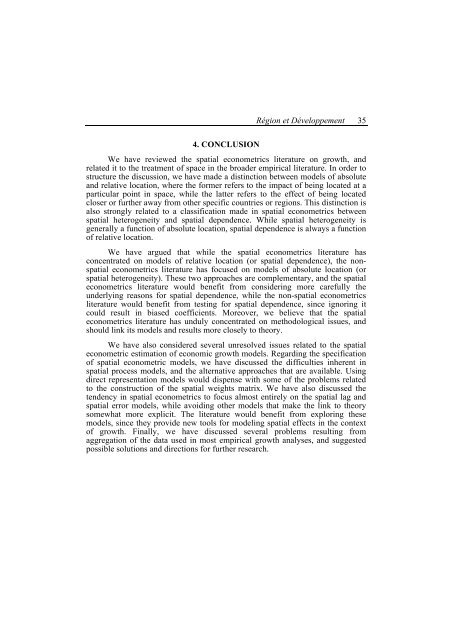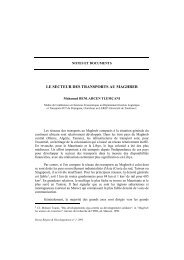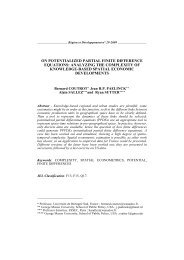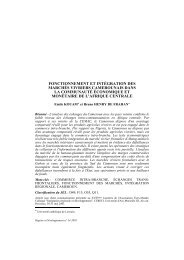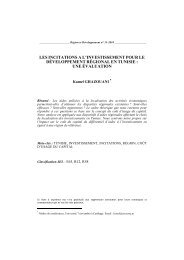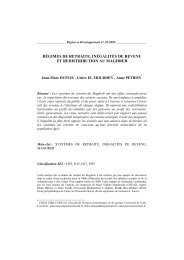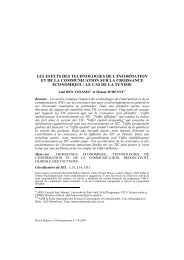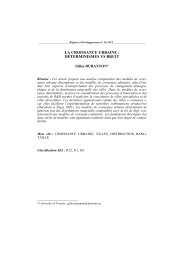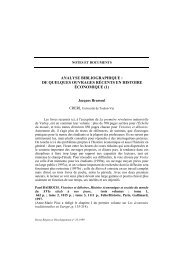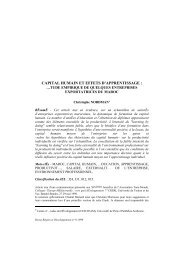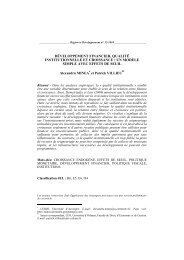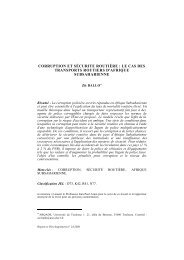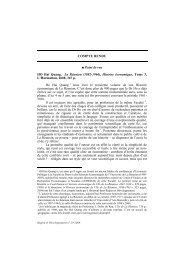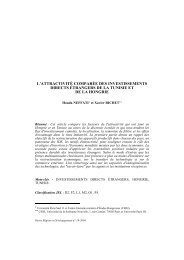space and growth: a survey of empirical evidence ... - ResearchGate
space and growth: a survey of empirical evidence ... - ResearchGate
space and growth: a survey of empirical evidence ... - ResearchGate
You also want an ePaper? Increase the reach of your titles
YUMPU automatically turns print PDFs into web optimized ePapers that Google loves.
Région et Développement 354. CONCLUSIONWe have reviewed the spatial econometrics literature on <strong>growth</strong>, <strong>and</strong>related it to the treatment <strong>of</strong> <strong>space</strong> in the broader <strong>empirical</strong> literature. In order tostructure the discussion, we have made a distinction between models <strong>of</strong> absolute<strong>and</strong> relative location, where the former refers to the impact <strong>of</strong> being located at aparticular point in <strong>space</strong>, while the latter refers to the effect <strong>of</strong> being locatedcloser or further away from other specific countries or regions. This distinction isalso strongly related to a classification made in spatial econometrics betweenspatial heterogeneity <strong>and</strong> spatial dependence. While spatial heterogeneity isgenerally a function <strong>of</strong> absolute location, spatial dependence is always a function<strong>of</strong> relative location.We have argued that while the spatial econometrics literature hasconcentrated on models <strong>of</strong> relative location (or spatial dependence), the nonspatialeconometrics literature has focused on models <strong>of</strong> absolute location (orspatial heterogeneity). These two approaches are complementary, <strong>and</strong> the spatialeconometrics literature would benefit from considering more carefully theunderlying reasons for spatial dependence, while the non-spatial econometricsliterature would benefit from testing for spatial dependence, since ignoring itcould result in biased coefficients. Moreover, we believe that the spatialeconometrics literature has unduly concentrated on methodological issues, <strong>and</strong>should link its models <strong>and</strong> results more closely to theory.We have also considered several unresolved issues related to the spatialeconometric estimation <strong>of</strong> economic <strong>growth</strong> models. Regarding the specification<strong>of</strong> spatial econometric models, we have discussed the difficulties inherent inspatial process models, <strong>and</strong> the alternative approaches that are available. Usingdirect representation models would dispense with some <strong>of</strong> the problems relatedto the construction <strong>of</strong> the spatial weights matrix. We have also discussed thetendency in spatial econometrics to focus almost entirely on the spatial lag <strong>and</strong>spatial error models, while avoiding other models that make the link to theorysomewhat more explicit. The literature would benefit from exploring thesemodels, since they provide new tools for modeling spatial effects in the context<strong>of</strong> <strong>growth</strong>. Finally, we have discussed several problems resulting fromaggregation <strong>of</strong> the data used in most <strong>empirical</strong> <strong>growth</strong> analyses, <strong>and</strong> suggestedpossible solutions <strong>and</strong> directions for further research.


